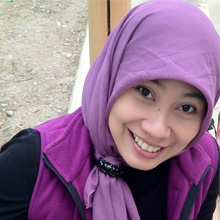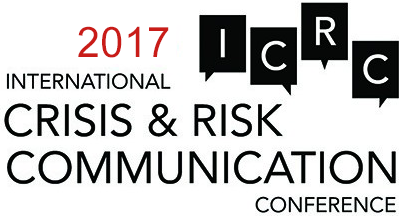
Researcher
International Environment and Disaster Management Laboratory, Graduate School of Global Environmental Studies, Kyoto University
Japan
Farah Mulyasari researches on effective risk communication in enhancing climate-related disaster resilience at International Environment and Disaster Management Laboratory, Graduate School of Global Environmental Studies, Kyoto University, Japan. Mulyasari is currently writing her dissertation for the fulfillment of Doctoral Program. She wrote journal articles and book chapters on risk communication through community-based organizations, such as women groups, youth groups and local faith-based groups in communities in Indonesia. Mulyasari is truly convinced that people-centered action in risk communication is indispensable and significantly help in building the community resilience to disasters. Since 2005 she is actively engaged and involved in community-based disaster risk management projects working with communities, local governments and non-governmental organizations under the umbrella of the collaboration between university-based research center, national agency and international donors.
2014
Breakout Session: Risk Communication Through Community-Based Society Organizations as People-Centered Actions in Disaster: Case of Bandung City, Indoneisa*
The presentation will illuminate local actions to disaster and highlights the potential role of three Community-Based Society Organizations (CBSOs) – women’s groups, youth groups, and religious groups – as risk communicators in Bandung, Indonesia. A framework is modeled for CBSOs’ risk communication process in bridging the gap between the local government and the community. A set of indicators in social, economic, and institutional resilience activities (SIERA), with a scope of 45 disaster risk reduction (DRR) activities covering three different disaster periods (before, during, and after disaster) was developed to characterize the process of the delivery of risk information by these CBSOs through their activities at sub-district and ward levels.
The data were collected through a questionnaire survey method using the SIERA approach. Each CBSO leader in a ward was surveyed about their perceptions of these 45 ongoing SIERA activities and their risk information source and dissemination process. Statistical analysis was applied to determine the relationship between variables such as periods of disaster and types of SIERA activities and its attributing factors (location, population, and dynamic of organizations in their locale) in finding variations of risk communication activity that may function for communities. Five risk communication processes of the CBSOs are identified; when their perceptions and ongoing activities are compared, activities such as dissemination of disaster risk information, conveying early warnings to their peers, and involvement of the local government have been carried out by these CBSOs. This indicates that CBSOs’ activities already have a certain degree of risk communication embedded in the communities. The results confirm that these CBSOs, through their social networks, can become active agents of change and bridge the communication gap between government and community. Thus, CBSOs’ risk communication provides the opportunity to contribute to the overall resilience building and disaster risk reduction as part of people-centered actions and is highlighting the human factors in communication.
*Farah Mulyasari and Rajib Shaw co-authored this paper. Farah Mulyasari will be presenting.


